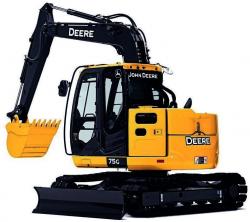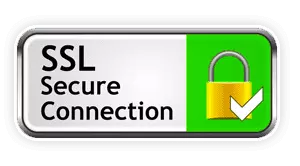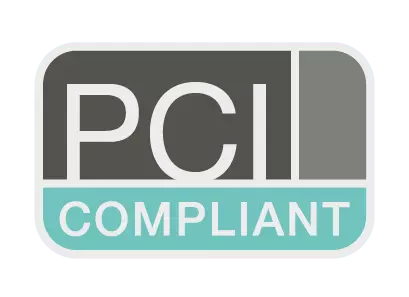John Deere 75G Excavator Operator's Manual (OMT337609)
John Deere 75G Excavator Operator's Manual (OMT337609)
OMT337609 - 75G Excavator Operator's Manual.pdf
Complete Operator's Manual for John Deere 75G mini Excavator. It's the same manual used by dealers that guaranteed to be fully functional and intact without any missing page.
John Deere 75G Excavator Operator's Manual is divided into different sections. Each section covers a specific component or system with detailed illustrations. A table of contents is placed at the beginning of each section. Pages are easily found by category, and each page is expandable for great detail. The printer-ready PDF documents work like a charm on all kinds of devices.
PRODUCT DETAILS:
Total Pages: 679 pages
File Format: PDF (bookmarked, Searchable, Printable, high quality)
Language: English
MAIN SECTIONS
1-1 - Safety-Safety and Operator Convenience
1-2 - Safety-General Precautions
1-3 - Safety-Operating Precautions
1-4 - Safety-Maintenance Precautions
1-5 - Safety-Safety Signs
2-1 - Operation-Operator's Station
2-2 - Operation-Operating the Machine
2-3 - Operation-Monitor Operation
3-1 - Maintenance-Machine
3-2 - Maintenance-Periodic Maintenance
3-3 - Maintenance-As Required
3-4 - Maintenance-Every 10 Hours or Daily
3-5 - Maintenance-Initial Service - 50 Hours
3-6 - Maintenance-Every 100 Hours
3-7 - Maintenance-Every 250 Hours
3-8 - Maintenance-Every 500 Hours
3-9 - Maintenance-Every 1000 Hours
3-10 - Maintenance-Every 2000 Hours
3-11 - Maintenance-Every 3000 Hours
3-12 - Maintenance-Every 4000 Hours
3-13 - Maintenance-Every 5000 Hours
4-1 - Miscellaneous-Machine
4-2 - Miscellaneous-Operational Checkout
4-3 - Miscellaneous-Troubleshooting
4-4 - Miscellaneous-Storage
4-5 - Miscellaneous-Machine Numbers
4-6 - Miscellaneous-Specifications
omt337609 - 75G Excavator
Table of Contents
Foreword
Manual Identification—READ THIS FIRST!
IMPORTANT
Emissions Control System Certification Label
FCC Notifications to User
Technical Information Feedback Form
Section 1-1: Safety—Safety and Operator Conveniences
Safety and Operator Convenience Features
Section 1-2: Safety—General Precautions
Recognize Safety Information
Follow Safety Instructions
Operate Only If Qualified
Wear Protective Equipment
Avoid Unauthorized Machine Modifications
Control Pattern Selector—If Equipped
Add Cab Guarding for Special Uses
Inspect Machine
Stay Clear of Moving Parts
Avoid High-Pressure Fluids
Avoid High-Pressure Oils
Work In Ventilated Area
Prevent Fires
Prevent Battery Explosions
Handle Chemical Products Safely
Decommissioning — Proper Recycling and Disposal of Fluids and Components
Exhaust Filter Ash Handling and Disposal
Prepare for Emergencies
Clean Debris from Machine
Section 1-3: Safety—Operating Precautions
Use Steps and Handholds Correctly
Start Only From Operator's Seat
Use and Maintain Seat Belt
Prevent Unintended Machine Movement
Avoid Work Site Hazards
Keep Riders Off Machine
Avoid Backover Accidents
Inspect and Maintain ROPS
Avoid Machine Tip Over
Use Special Care When Lifting Objects
Add and Operate Attachments Safely
Section 1-4: Safety—Maintenance Precautions
Park and Prepare for Service Safely
Service Cooling System Safely
Remove Paint Before Welding or Heating
Make Welding Repairs Safely
Drive Metal Pins Safely
Clean Exhaust Filter Safely
Section 1-5: Safety—Safety Signs
Safety Signs
Section 2-1: Operation—Operator’s Station
Pedals, Levers, and Panels
Switch Panel
Switch Panel Functions
Rear Left Panel
Horn
Pilot Shutoff Lever
Engine Stop Switch
Left Console
Travel Alarm and Travel Alarm Cancel Switch
Rear Right Panel
Right Console
Exhaust Filter Parked Cleaning Switch
Right Enable Switch
Auxiliary Function Enable Switch—If Equipped
Cab Heater and Air Conditioner
Selecting Display Between Celsius and Fahrenheit
Operating the AM/FM Radio
Fire Extinguisher Mounting Location
Secondary Exit Tool
Cab Dome Light Switch
Opening Upper Front (Secondary Exit) Window
Removing and Storing the Lower Front Window
Opening Cab Door Window
Opening and Closing the Polycarbonate Type Roof Exit Cover
Adjusting the Mechanical Suspension Seat
Adjusting Pilot Control Lever Console Height
Section 2-2: Operation—Monitor Operation
Monitor
Monitor Functions
Monitor Start-Up
Main Menu
Main Menu—Alarm List
Main Menu—Air Conditioner
Main Menu—Radio
Main Menu—Setting Menu
Main Menu—Setting Menu—Date and Time
Main Menu—Setting Menu—Auto Shutdown
Main Menu—Setting Menu—Auto Exhaust Filter Cleaning
Main Menu—Setting Menu—Sub Meter Selection
Main Menu—Setting Menu—Display Item Selection
Main Menu—Setting Menu—Brightness Adjustment
Main Menu—Setting Menu—Language
Main Menu—Setting Menu—Unit Selection
Main Menu—Setting Menu—Main Menu Sequence Change
Main Menu—Information Menu
Main Menu—Information Menu—Operation
Main Menu—Information Menu—Attachment Operation
Main Menu—Information Menu—Maintenance
Main Menu—Information Menu—Troubleshooting
Main Menu—Information Menu—Monitoring
Section 2-3: Operation—Operating the Machine
Before Starting Work
Operator's Daily Machine Check Before Starting
Starting the Engine
Cold Weather Start Aid
Cold Weather Warm-Up
Travel Pedals and Levers
Auxiliary Function Lever (AFL)—If Equipped
Exhaust Filter
Exhaust Filter Parked Cleaning
Control Lever Pattern Operation
Control Lever Pattern Conversion—If Equipped
Control Lever Pattern Conversion
Positioning Auxiliary Line Selector Valve—If Equipped
Operating Backfill Blade
Operating Tips—Backfill Blade
Operating in Water and Mud
Selecting Correct Track
Driving Up a Steep or Slippery Slope
Lower Boom With Engine Stopped
Parking the Machine
Loading and Unloading for Transport
Towing Machine a Short Distance
Lifting With Bucket Loop
Lifting With John Deere Quick Coupler
Lifting Machine
Section 3-1: Maintenance—Machine
Required Emission-Related Information
Diesel Fuel
Diesel Fuel Specifications
Lubricity of Diesel Fuel
Biodiesel Fuel
Minimizing the Effect of Cold Weather on Diesel Engines
Testing Diesel Fuel
Handling and Storing Diesel Fuel
Alternative and Synthetic Lubricants
Lubricant Storage
Mixing of Lubricants
Diesel Engine Break-In Oil
Diesel Engine Oil
Hydraulic Oil
Travel Gear Case Oil
Grease
Light Duty Diesel Engine Coolant (for diesel engines without wet sleeve cylinder liners)
Drain Intervals for Diesel Engine Coolant
John Deere COOL-GARD™ II Coolant Extender
Supplemental Coolant Additives
Operating in Warm Temperature Climates
Additional Information About Diesel Engine Coolants and John Deere COOL-GARD™ II Coolant Extender
Testing Diesel Engine Coolant
Disposing of Coolant
Section 3-2: Maintenance—Periodic Maintenance
Service Machine at Specified Intervals
Check the Hour Meter Regularly
Prepare Machine for Maintenance
Engine Access Door
Open Maintenance Access Doors
Fuel Tank
Hydraulic Breaker and Crusher Attachments
Fluid Analysis Program Test Kits and 3-Way Coolant Test Kit
Service Intervals
Required Parts
Section 3-3: Maintenance—As Required
Clean Radiator Core and Oil Cooler
Check Coolant
Check Track Sag—Rubber Track
Check Track Sag—Steel Track—If Equipped
Adjust Track Sag
Clean Fuel Tank Inlet Screen
Drain Water and Sediment from Fuel Tank Sump
Drain Water and Sediment from Primary Fuel Filter and Water Separator
Check and Adjust Air Conditioner Belt
Check and Clean Radiator Air Inlet Screen
Check Washer Fluid Level
Check and Clean Air Cleaner Dust Unloader Valve
Section 3-4: Maintenance—10 Hours or Daily
Check Engine Oil Level
Check Hydraulic Tank Oil Level
Check Engine Coolant Level
Check Bucket Teeth
Check Seat Belt
Section 3-5: Maintenance—Initial Service—50 Hours
Inspect and Re-Torque Track Hardware
Section 3-6: Maintenance—Every 100 Hours
Lubricate Bucket and Link Pins
Lubricate Working Pivots
Lubricate Front End Pin Joints
Section 3-7: Maintenance—Every 250 Hours
Check Travel Gear Case Oil Level
Drain Water and Sediment From Hydraulic Tank
Take Engine Oil Sample
Lubricate Blade Pins
Inspect and Re-Torque Track Hardware
Check Battery Electrolyte Level and Terminals
Section 3-8: Maintenance—Every 500 Hours
Drain and Refill Engine Oil and Replace Filter
Lubricate Swing Bearing Gear
Lubricate Control Lever Universal Joint
Replace Primary Fuel Filter and Water Separator
Replace Final Fuel Filter
Take Fluid Samples
Lubricate Swing Bearing
Check Air Intake Hose
Check Radiator Coolant Level
Clean Cab Fresh Air and Cab Recirculating Air Filters
Section 3-9: Maintenance—Every 1000 Hours
Replace Pilot System Oil Filter
Check and Adjust Engine Valve Lash
Replace Hydraulic Tank Oil Filter
Check and Adjust Fan Belt Tension
Replace Engine Air Cleaner Element
Check Starter and Alternator
Section 3-10: Maintenance—Every 2000 Hours
Drain and Refill Travel Gear Case Oil
Clean Engine Crankcase Ventilation Tube
Section 3-11: Maintenance—Every 3000 Hours
Service Exhaust Filter
Section 3-12: Maintenance—Every 4000 Hours
Replace Swing Drain Filter
Section 3-13: Maintenance—Every 5000 Hours
Drain and Refill Hydraulic Tank Oil
Drain Cooling System
Cooling System Fill and Deaeration Procedure
Section 4-1: Miscellaneous—Machine
Bleed Fuel System
Do Not Service or Adjust Injection Nozzles or High Pressure Fuel Pump
Do Not Service Control Valves, Cylinders, Pumps, or Motors
Precautions for Alternator and Regulator
Using Booster Batteries—24-Volt System
Handling, Checking, and Servicing Batteries Carefully
Using Battery Charger
Replacing Batteries
Welding On Machine
Bleed Hydraulic System
Clean Machine Regularly
Adding 12-Volt Accessories
Connecting and Disconnecting Auxiliary Lines—If Equipped
Replacing Fuses
Replacing Bucket Teeth—TK Series
Replacing Bucket Teeth
Track Sag General Information
Rubber Track Care
Removing and Installing Rubber Track
Converting the Track
Unified Inch Bolt and Screw Torque Values
Metric Bolt and Screw Torque Values
Section 4-2: Miscellaneous—Operational Checkout
Operational Checkout
Section 4-3: Miscellaneous—Troubleshooting
Troubleshooting Procedure
Engine
Hydraulic System
Electrical System
Section 4-4: Miscellaneous—Storage
Prepare Machine for Storage
Monthly Storage Procedure
Section 4-5: Miscellaneous—Machine Numbers
Record Product Identification Number (PIN)
Record Engine Serial Number
Keep Proof of Ownership
Keep Machines Secure
Section 4-6: Miscellaneous—Specifications
Engine Specifications
Drain and Refill Capacities
Machine Specifications
Working Ranges
Excavator Lift Capacity—Blade: 2370 mm (7 ft. 9 in.); Arm: 1.62 m (5 ft. 4 in.); Bucket: 0.28 m3 (0.37 yd3); Rubber Crawler Pad: 450 mm (1 ft. 6 in.)
Excavator Lift Capacity—Blade: 2370 mm (7 ft. 9 in.); Arm: 2.12 m (6 ft. 11 in.); Bucket: 0.28 m3 (0.37 yd3); Rubber Crawler Pad: 450 mm (1 ft. 6 in.)
Excavator Lift Capacity—Blade: 2470 mm (8 ft. 1 in.); Arm: 1.62 m (5 ft. 4 in.); Bucket: 0.28 m3 (0.37 yd3); Triple Semi-Grouser Shoe: 600 mm (2 ft. 0 in.)
Excavator Lift Capacity—Blade: 2470 mm (8 ft. 1 in.); Arm: 2.12 m (6 ft. 11 in.); Bucket: 0.28 m3 (0.37 yd3); Tiple Semi-Grouser Shoe: 600 mm (2 ft. 0 in.)
Excavator Lift Capacity—Blade: 2470 mm (8 ft. 1 in.); Arm: 1.62 m (5 ft. 4 in.); Bucket: 0.28 m3 (0.37 yd3); Rubber Belt: 450 mm (1 ft. 6 in.)
Excavator Lift Capacity—Blade: 2470 mm (8 ft. 1 in.); Arm: 2.12 m (6 ft. 11 in.); Bucket: 0.28 m3 (0.37 yd3); Rubber Belt: 450 mm (1 ft. 6 in.)







